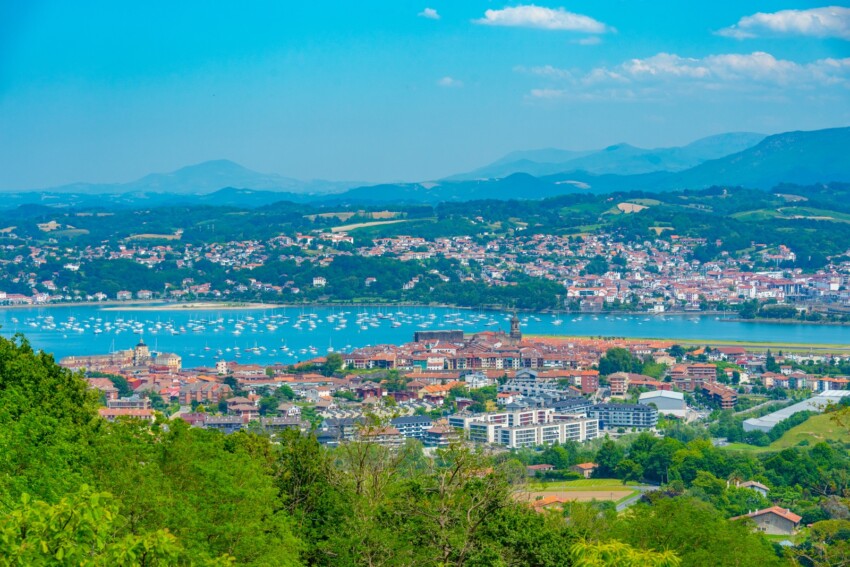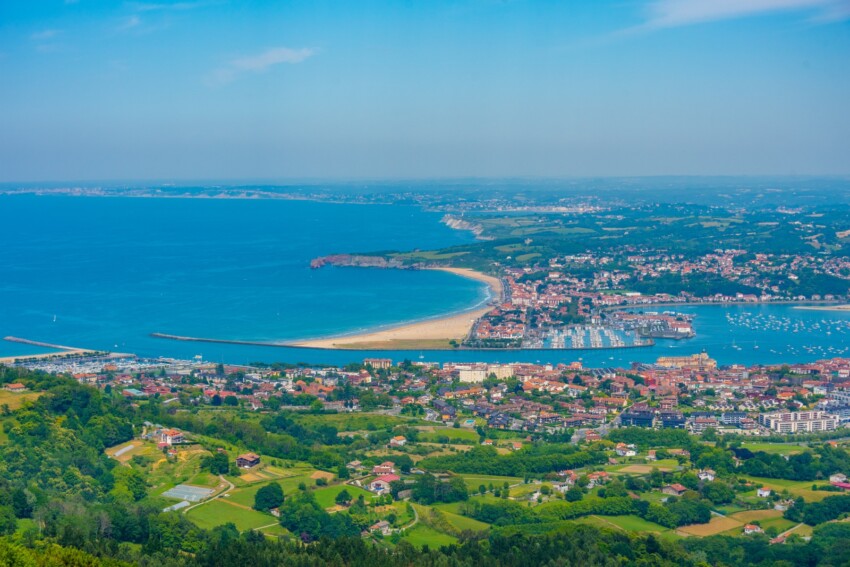

Located on the border between Spain and France, Irun is a strategic city that serves as an important crossing point between the two countries. This privileged position has made it a crossroads of cultures over the centuries, as evidenced by the numerous archaeological finds from Roman times. Today, Irun is a modern and dynamic city that has been able to preserve its historical heritage, offering visitors an interesting mix of the traditional and the contemporary.
Its proximity to elegant San Sebastián and privileged location between the sea and the mountains make it an ideal base for exploring the Basque Country. The Bidasoa River, which marks the natural border with France, provides the city with beautiful scenery and opportunities for outdoor activities.
Irun is a city that hides unexpected treasures, from its rich Roman history to the Basque traditions still alive in its neighbourhoods. Its attractions can be visited comfortably in a couple of days, while also allowing for excursions in the surrounding area.
The Church of Santa Maria del Juncal is the city’s most important religious monument. Built in the 16th century in Gothic-Renaissance style, this church stands in the heart of the old town. Its interior houses a valuable 17th-century Baroque main altarpiece and a venerated image of the Virgin of Juncal, the town’s patron saint. The façade, with its finely decorated Renaissance portal, is an excellent example of Basque religious architecture. The bell tower, added in the 18th century, provides a visual landmark throughout the city.
The Roman Oiasso Museum is an essential stop to understand the historical importance of Irun. This modern museum houses artefacts from the ancient Roman city of Oiasso, which stood on this site. The permanent collections include objects from daily life, coins, ceramics and other artefacts that testify to the wealth of the Roman settlement. The museum also organises educational workshops and guided tours to nearby archaeological sites, including the Roman Baths of Beraketa and the Roman Port of Tadeo Murgia.
The Plaza del Ensanche is the beating heart of the modern city. This elegant 19th-century square is surrounded by architecturally interesting buildings that testify to the city’s growth during the industrial revolution. The Town Hall, built in 1859, dominates the square with its neoclassical façade. The area is bustling with cafés, restaurants and shops and is the ideal place to observe the daily life of Irun’s inhabitants.
The Plaiaundi Ecological Park is a natural oasis of great environmental value located at the mouth of the Bidasoa River. This wetland ecosystem is an important stopping point for migratory birds and is home to a rich biodiversity. Visitors can explore the park via well-marked trails and birdwatching observatories. The interpretation centre offers detailed information on the local flora and fauna.
The Hermitage of San Marcial is located at the top of the mountain of the same name and offers a spectacular panoramic view of the bay of Txingudi, the Pyrenees and the French coast. The sanctuary, rebuilt after the Civil War, is a pilgrimage destination during the San Marcial festival on 30 June. The route to reach it can be done on foot along well-marked paths and is particularly popular with trekkers.
The Casa Consistorial or Town Hall of Irun is an elegant 19th century building that represents one of the best examples of civil architecture in the city. Its neoclassical façade with Doric columns and central balcony is particularly impressive. The interior conserves some original decorative elements and the historic Council Chamber. The palace also hosts temporary exhibitions dedicated to local history and culture.

The city centre is the ideal area to stay in Irun, with a good selection of modern hotels and traditional guesthouses. The area around the Plaza del Ensanche offers mid-range accommodation with easy access to the main points of interest and public transport.
The San Miguel district is a quiet but well-connected residential area, ideal for those seeking a more relaxed stay. Here you will find several tourist flats and bed & breakfasts that offer excellent value for money.
The railway station area is practical for those using Irun as a base for exploring the region, with business-oriented hotels and cheaper accommodation. The area is well served by public transport and offers easy access to both the centre and the main communication routes.
Irun is one of the main transport hubs in northern Spain. The city is served by an efficient railway network that connects it to both France and the main Spanish cities. Irun station is an important international hub where the change between the Spanish and French railway systems takes place.
San Sebastián Airport is only 3 km from the city centre and is connected by a regular bus service. Biarritz airport in France is 25 km away and can also be reached by shuttle services.
For those arriving by car, Irun is served by the AP-8/E-70 motorway that connects Bilbao with France. The local road network is well developed and allows for easy connections to neighbouring localities.
The bus station offers regular connections with the main Spanish and French cities, as well as an efficient local transport service covering the entire province of Gipuzkoa.
What's the weather at Irún? Below are the temperatures and the weather forecast at Irún for the next few days.
Irun is located in the far north-east of the province of Gipuzkoa, in the Basque Country, right on the border with France. The city is 20 km from San Sebastián, 25 km from Biarritz and about 100 km from Bilbao. Its location on the river Bidasoa, which marks the natural border with France, makes it an important crossing point between the two countries. The city is surrounded by mountains to the south and overlooks the Bay of Txingudi to the north.